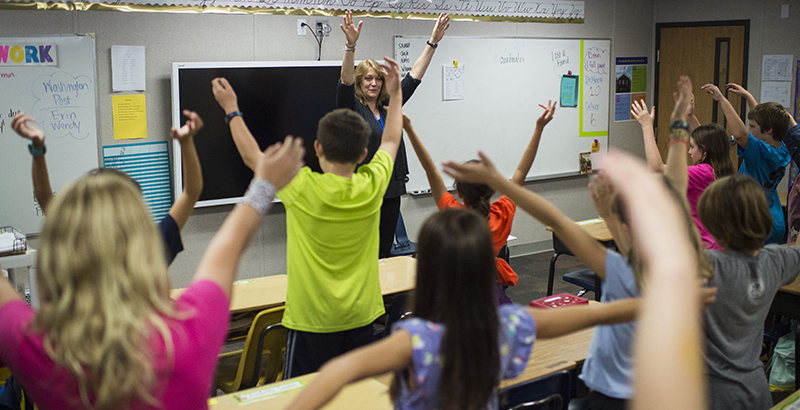Social-Emotional Learning Helps Students Succeed, but by How Much? New Report Looks for Answers

Taking care of students’ social-emotional needs can significantly impact their academics, boost graduation rates, and improve economic outcomes. But figuring out how to assess social-emotional learning every day in the classroom is “one of the biggest missing pieces.”
That’s how researcher Clark McKown described it. McKown, a professor at Rush University in Chicago, co-authored a report released today that summarizes the promises and challenges of creating tools for educators to understand how well their students are learning skills like grit, perseverance, self-regulation, and social cues.
The new report looked at the winners of an assessment design competition hosted by the Collaborative for Academic, Social, and Emotional Learning and found some promises as well as challenges in how SEL skills are measured.
Getting these assessments right is critical if the SEL movement is to be seen as more than just a “fad,” McKown wrote in April. “I’d like it to be a data-based discussion about the extent to which SEL is helpful and how we can make it better,” he told The 74.
Among the report’s findings:
No shared definition for SEL
Part of the problem is that even leading researchers don’t have consistent definitions for core social-emotional skills. For example, the UChicago Consortium on School Research emphasizes ideas like “values” and “mindsets,” whereas CASEL includes “self-awareness” and “responsible decision-making” on its list of core competencies.
The design competition saw this ambiguity play out among the submitted projects. For example, one team created a program to measure self-control by looking at how careful or careless students were when responding to challenging questions. Another team focused its design on measuring how well students could pick up on cues from social interactions with their peers.
Creative solutions for hard-to-quantify skills
Social-emotional skills can’t be tested as easily as geometry. Often, schools resort to annual surveys that rely on students’ self-reporting or teachers’ observational notes. So the report’s authors shared excitement at some of the solutions that design winners conceived to measure skills you won’t find on the SAT.
For example, a design called Social Detective shows high school students a dozen videos, which they respond to by analyzing characters’ thoughts and feelings. Another tool called The Calendar Task uses an online calendar application to measure how well middle and high schoolers can organize, manage their time, and schedule ahead.
Difficult to use across diverse districts
The report said that most of the designs, while scalable and easy to use, wouldn’t work across a wide range of school districts. Part of the problem is that there’s very little funding behind this assessment research.
McKown contextualized the challenge by contrasting the millions of dollars PARCC spent to make sure its tests could remain applicable across the nation’s incredibly diverse school districts. “We’re very early in the process of developing mature SEL assessments,” he said.
More teacher voice needed in SEL development
CASEL will continue its design competition over the next two years, but before its next call for submissions, it will be reaching out to educators, McKown said. Most submissions CASEL received this year were from academics and researchers, but CASEL wants to see what teachers would find most valuable in assessments before its next go-round.
Get stories like these delivered straight to your inbox. Sign up for The 74 Newsletter

;)
